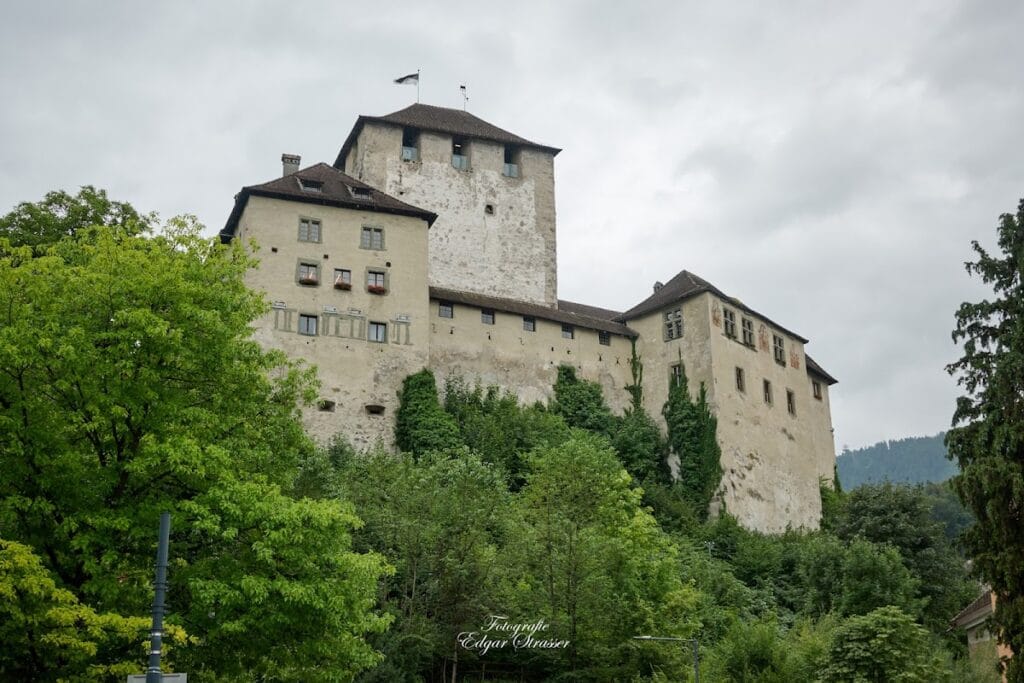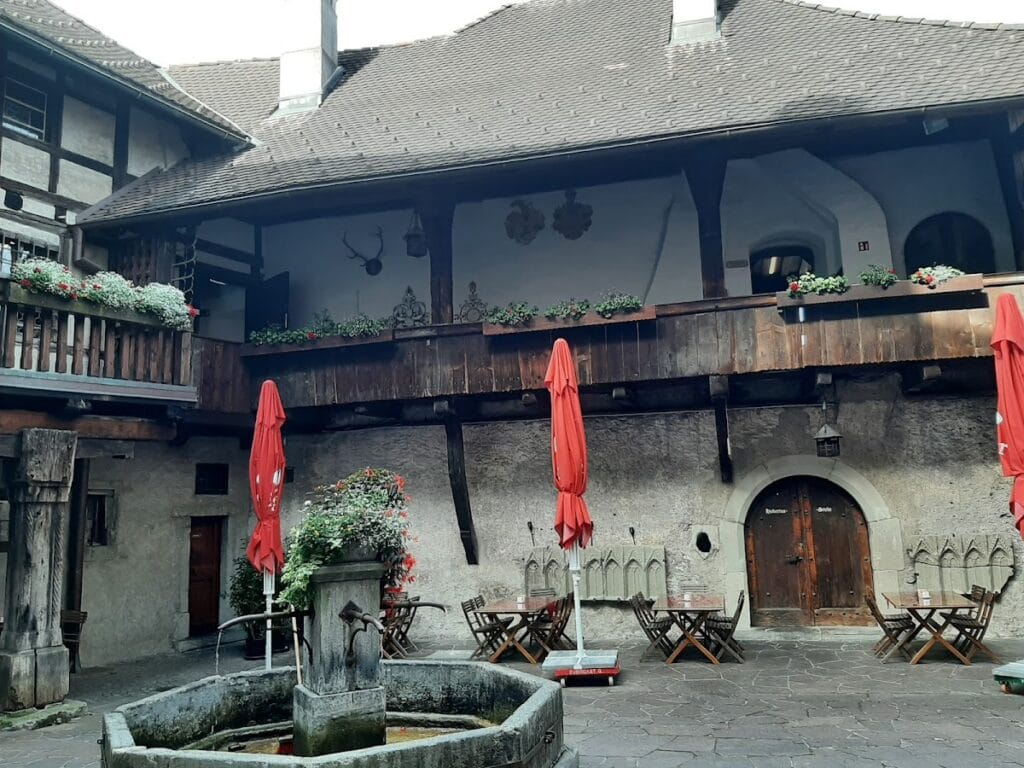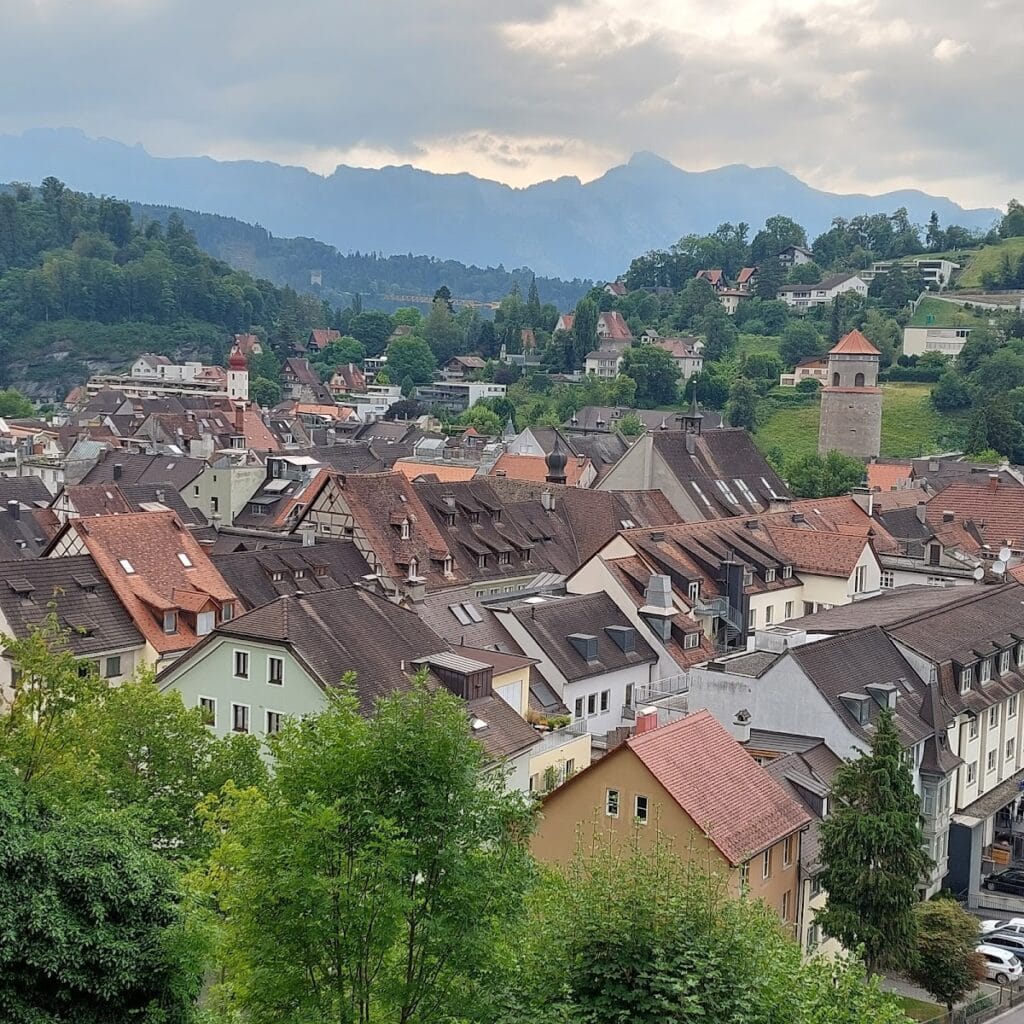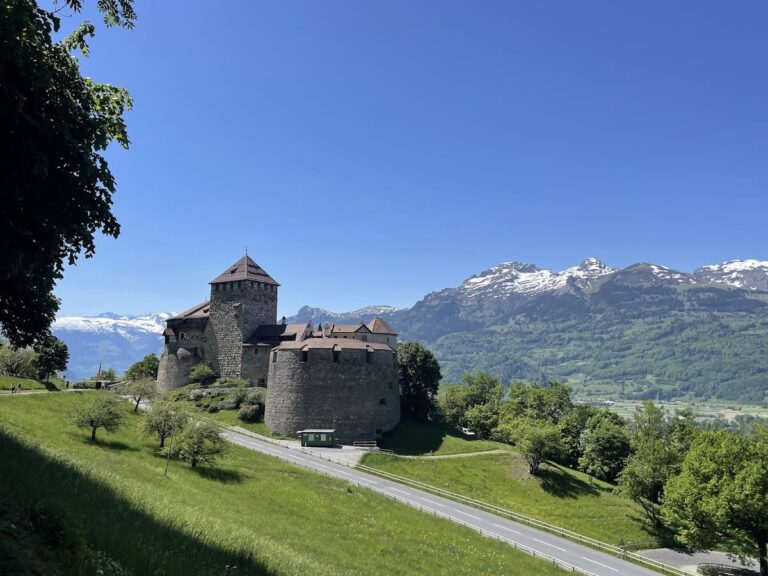Schattenburg Castle: A Medieval Fortress in Feldkirch, Austria
Visitor Information
Google Rating: 4.5
Popularity: Medium
Official Website: www.schattenburg.at
Country: Austria
Civilization: Medieval European
Site type: Military
Remains: Castle
History
Schattenburg castle stands above the town of Feldkirch in Austria and was constructed by a medieval noble lineage during the early 13th century. Around the year 1200, Count Hugo III of Tübingen, later known as Hugo of Montfort, established the fortress as part of his relocation from Bregenz to Feldkirch, a city he founded. This castle became the seat of his family’s power and laid the foundation for Feldkirch’s development.
By the 14th century, Schattenburg had become the administrative hub of the Montfort-Feldkirch county, supplanting an earlier site called Alt-Montfort castle. In 1375, Rudolf IV von Montfort transferred ownership of Schattenburg and the surrounding lordship to Duke Leopold III of the Habsburg dynasty. Under Habsburg control, the castle’s governance was entrusted to appointed officials known as vogts or bailiffs, who lived within its walls to oversee the territory.
In autumn 1405, Schattenburg came under siege during the Appenzell Wars when combined forces from the Swiss Confederation and Feldkirch laid siege to the castle for eighteen weeks. Commanded by Vogt Count Friedrich von Toggenburg, the defenders capitulated at the end of January 1406 following persistent artillery attacks. The siege resulted in the castle being completely destroyed by fire. Reconstruction began shortly after, with the castle being rebuilt over the next two years. Nevertheless, it sustained severe damage again in 1415 and 1417 amid conflicts involving King Sigismund and Duke Friedrich IV.
The year 1417 marked another transition when the castle was pledged to Count Friedrich VII von Toggenburg, who carried out major expansions, including erecting the three main wings that give Schattenburg its current form. After Friedrich VII’s death in 1436, control of the castle reverted once more to the Habsburgs.
Throughout the 15th century, further enhancements and reinforcements were undertaken under the supervision of Vogt Johann von Königsegg, aimed at strengthening defenses to counter artillery advancements. These measures were further updated in the 17th century. The improved fortifications helped Schattenburg resist capture during the Swabian War of 1499, when the castle served as a base for Emperor Maximilian I in his efforts to maintain Habsburg influence against Swiss expansion.
In the context of the Thirty Years’ War, Swedish forces occupied both Schattenburg and Feldkirch without opposition in 1647. Destruction of the castle and the town was avoided when Feldkirch paid a substantial war indemnity and promised to uphold the castle’s upkeep on behalf of the Swedish crown. Following this period, the fortress gradually lost its military significance.
By 1773, the regional administration and vogt’s office were relocated from the castle into the city, signaling the beginning of Schattenburg’s decline as a seat of power. Between 1778 and 1825, the castle found a new function as a prison, housing six cells and an interrogation chamber. Attempts were made in the years around 1800 and 1812 to sell the castle’s stone as building material, reflecting its reduced status.
Ownership transferred to the city of Feldkirch in 1825. Subsequently, the fortress served as military barracks from 1831 until 1850 before being converted into a poorhouse, a role it fulfilled until 1914. Efforts by the Feldkirch Museum and Local History Society saved Schattenburg from ruin, and it was transformed into a museum of local heritage during 1916–1917.
During the era of National Socialism, plans emerged to convert Schattenburg into an ideological “order castle” for elite training, though these proposals were never carried out. After World War II, with Feldkirch located in the French occupation zone, the castle temporarily accommodated French troops. It was returned to the city in November 1953, at which point the museum reopened to the public.
Today, while Schattenburg still serves as a museum, its inner courtyard also features a restaurant accessible independently of the museum, continuing the castle’s long history of adaptation.
Remains
Schattenburg occupies a hilltop overlooking the town it once guarded, connected historically to Feldkirch by a former city wall. Its original medieval layout was established around 1200, centered on a large bergfried, or keep, which measures approximately 16 by 12 meters in footprint and rises 21 meters high. This keep formed the castle’s primary defensive tower. The initial complex included a palas, the main residential building, surrounded by robust defensive walls, moats, and once protected by a drawbridge, underscoring its strategic importance.
The castle’s present-day form largely derives from additions made in the early 15th century under Count Friedrich VII von Toggenburg, who constructed the three principal wings that define Schattenburg’s characteristic layout. These expansions provided both enhanced living quarters and improved fortifications as military technology evolved.
Subsequent fortifications in the 15th and 17th centuries reflect responses to the increasing power of artillery. Strengthened walls and adapted defenses contributed to the fortress’s resilience, most notably during the Swabian War of 1499, when its fortifications effectively thwarted Swiss attempts to seize the site.
Inside, the castle chapel houses frescoes from the 16th century, illustrating the artistic heritage preserved within the structure. Schattenburg also contains one of Austria’s foremost collections of historical weaponry, emphasizing its enduring martial legacy.
The castle’s inner courtyard remains a central, open space framed by its buildings. This courtyard currently hosts a restaurant offering views across Feldkirch’s historic old town and is accessible without the need for museum entry.
The hill on which Schattenburg stands is intersected by two tunnels, both bearing the castle’s name. One of these, no longer in active transportation use, functions today as a shooting range, repurposing the site’s defensive heritage.
In 2007, a detailed cardboard model of the castle was created at a scale of 1:350, measuring 30 by 11 by 12 cm. This miniature faithfully reproduces architectural features such as defensive walkways, stairs, and roofing structures, offering a precise visual summary of the castle’s form.
In recent times, the slopes below Schattenburg have seen the reestablishment of vineyards, continuing a tradition of land use around the castle and contributing to the cultural landscape of the area.










